New lenses at Photokina 2014
The focus turns to lenses at this year's imaging fair
Sigma 18-300mm f/3.5-6.3 DC Macro OS HSM
Mounts: Sigma, Canon, Sony, Nikon, Pentax
Price: £500/US$579/AU$677

Sigma's new superzoom lens is designed for APS-C cameras, and offers a huge 16.6x zoom range – though it has been trumped by the slightly wider Tamron 16-300mm. The Sigma 18-300mm does, however, offer a 0.39m minimum focus distance, making it very good for close-ups – and you will also be able to get a close-up lens attachment to offer a 1:2 magnification ratio, which gets close to the magnification offered by true macro lenses.
Sigma claims this lens features a newly-developed OS (optical stabilisation) system to reduce shake, and there are four FLD (low dispersion) elements and one SLD (special low dispersion) element within the lens to minimise chromatic aberration at longer focal lengths – this is often an issue with superzooms. The price is competitive and the weight is a manageable 585g, so this could be the ideal all-in-one lens for photographers who want one zoom that can do practically any job.
Sony FE PZ 28-135mm F4 G OSS
Mount: Sony E
Price: £2,500/US$2,500/AU$2,818
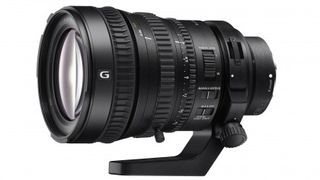
Sony has announced what it claims is the world's first 35mm full frame lens with power zoom capability. The PZ 28-135mm f/4 looks (and is) fabulously expensive, but it's designed with the very specific requirements of videographers in mind.
Get daily insight, inspiration and deals in your inbox
Get the hottest deals available in your inbox plus news, reviews, opinion, analysis and more from the TechRadar team.
Variations in the angle of view while focusing (it's called 'breathing') are minimised, as are changes in focus when you change the zoom. These are relatively unimportant for stills photography but highly significant for video. There are three control rings for zoom, focus and iris adjustment – again, a video-specific feature – and the power-zoom mechanism provides a smoother, more progressive zoom action.
Tamron SP 15-30mm f/2.8 Di VC USD
Mounts: Canon EF-S & EF, Nikon DX & FX, Sony
Price: TBC
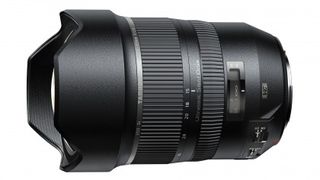
The new Tamron SP 15-50mm f/2.8 is designed for full-frame sensors, and offers a tantalising alternative to the premium own-brand lenses from camera makers. The combination of a constant f/2.8 maximum aperture and Tamron's own VC (Vibration Compensation) technology should make it very effective in low-light conditions, and its 9-bladed diaphragm is designed to produce a smooth, attractive bokeh in out-of-focus backgrounds.
The new lens is equipped with Tamron's USD (Ultrasonic Silent Drive) autofocus with full-time manual override, and the front element is water and dirt repellent – which is especially handy on super-wideangle lenses with large, convex front elements. You could also use this lens on APS-C cameras with compatible mounts, but it will lose its super-wide angle of view. It's a pretty substantial-looking lens with a weight of 540g – but that's par for the course with fixed-aperture super-wide zooms.
Tokina AT-X 70-200mm F4/4 PRO FX VCM-S
Mount: Nikon
Price: £699/US$1,099/AU$1,238
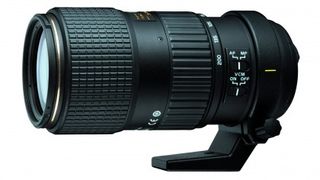
Tokina's new 70-200mm f/4 is designed as a step up from regular consumer telephoto zooms and a more affordable alternative to professional zoom lenses. The fixed f/4 maximum aperture will make the Tokina handy in low light, especially at longer zoom settings, and Tokina's own VCM (vibration control module) image stabilisation system should help keep images sharp even at marginal shutter speeds. The 'S' in the name denotes the use of a high-speed ultrasonic AF motor.
The Tokina 70-200mm f/4 is designed for full-frame cameras, but you can also use it on APS-C models, where it becomes the equivalent of a 135-300mm f/4 lens. It feels fairly hefty at 980g, however, and competes head-on with Nikon's own, lighter, 70-200mm f/4.
Zeiss Otus 85mm f/1.4
Mount: Canon, Nikon
Price: £3,429/US$4,490/AU$5.060

Zeiss Otus lenses are full-frame, fixed focal length lenses designed for photographers who want the best possible quality. The new 85mm f/1.4, first shown at Photokina 2014, is a classic 'portrait' lens, though lenses of this type are also ideal for general photography, combining a short telephoto angle of view with a wide maximum aperture.
The Otus 85mm f/1.4 uses special glass with 'anomalous partial dispersion' to counter longitudinal chromatic aberration – colouration around the edges of out-of-focus objects. The Canon version is designated ZE, while the Nikon version is designated ZF.2. These are both pretty solid lenses, weighing in at 1,200g and 1,140g respectively.
Zeiss Loxia 35mm f/2 and 50mm f/2
Mount: Sony E
Price: £985/US$1,299/AU$1,464 (35mm f/2), £720/US$949/AU$1,069 (50mm f/2)
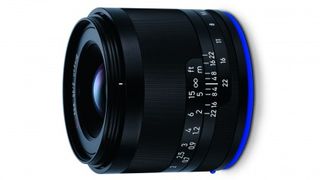
These new Zeiss Loxia lenses are designed specifically for Sony's full-frame E mount cameras. They are manual focus only but they do feature an electronic interface that can activate a magnified view on the camera.
Both lenses use a mechanical aperture control, though the click-stops can be disabled to allow smooth, stepless aperture adjustments while shooting video – more and more lens makers are making lenses with videography in mind. The maximum aperture of f/2 makes it possible to shoot in low light at lower ISO settings (therefore less noise) and to create shallow depth of field effects with blurred backgrounds.
Zeiss Vario-Tessar T* FE 16-35mm f/4 ZA OSS
Mount: Sony E
Price: £1,199/$US1,349/AU$1,521
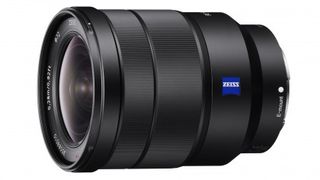
Designed for Sony's new full-frame E-mount cameras, the Zeiss 16-35mm f/4 is a super-wideangle zoom that complements Zeiss's existing 24-70mm and 70-200mm lenses for this camera. Unlike the Zeiss Otus and Loxia lenses, this one does offer autofocus – it also has OSS (Optical SteadyShot) lens-based image-stabilisation.
The T* in the name stands for Zeiss's own T* lens coating, which minimises ghosting and flare. The f/4 maximum aperture is not quite as wide as the f/2.8 apertures on some rival brands, but it does make the Zeiss relatively light and portable – it's also dust and moisture resistant. These full-frame E-mount Zeiss lenses are actually a joint branding exercise between Sony and Zeiss, which is why you'll see them for sale on the Sony Store website.
Most Popular

